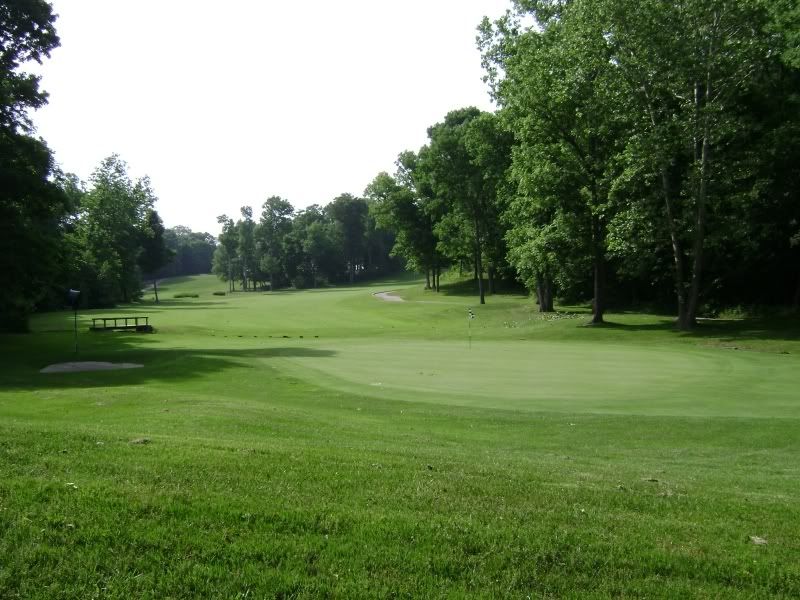Eagle Creek Golf Club
Indianapolis, IN
When it opened in 1975, Eagle Creek was the proud home of a fine Pete Dye layout. It also housed a shorter nine-hole course to the west of the main routing. The original championship routing exceeded 7,000 yards from the back markers and was famous for its difficulty. There are many ups and downs associated with the routing. These elevation changes create many of the notorious approaches over valleys to greens perched on the other side of the steep drop-off.
With the addition of the nine holes by Liddy in 2001, the club split the original layout into two separate courses to handle increased play and to hopefully help alleviate some of the maintenance issues that seemed to plague the golf course for overplay. Unfortunately, this eliminated the chance to play one of the best and most difficult tests in the state. There are few who do not wish the course was put back together. Of the two courses that now reside on the site the Sycamore is the more difficult and holds ten of the old course holes. The remainder of the original holes are on the front nine of the Pines layout. Even though the monster was divided, that does not mean that Eagle Creek is not worthy of a visit as both of the current courses are solid from the first tee to the last green.
The greens by Pete Dye were often placed on elevated locations with a few located strategically near some water. The original greens by Dye appear to be subtle in design, mostly relying on slope to provide the interest for the player. If the greens would have been the typical Dye fare they would have overwhelmed the golfer and made the course too extreme for the average player. The later holes added by Liddy feature a reflection of the more modern Dye version of design with slick greens that feature waves feeding in from the sides of the putting surface. The bunkering around the course is also a demonstration of the difference in early Dye versus the modern style. Many of the bunkers on the original holes were smaller and more roundish in shape and style with a Dye trademark, wooden railroad ties, adding a nice touch. The modern style features slick looking bunkers that are flat-bottomed and placed at angles with steep grass faces to increase the strategic demands on the player and the penalty for an erroneous strike of the ball.
With all of the bemoaning of the added holes, no one should be afraid of seeing the entire 36 hole complex. Liddy’s work and the additional nine done by Dye are not awful, they just lack the dramatic nature of the original holes found on the course. If these sets of holes had been completed to comprise an entire second course it would have been much better. Liddy’s style is apparent on the group of holes he laid out and they stick out from the original Dye holes on the big course. But for some reason they seem to fit much better with the third nine from the original course. This is mostly due to a similar flat terrain. But even holes like the eighth, a short par four, and the sixteenth, a mid length par three with a wonderful green complex, add interest to the Sycamore course at Eagle Creek.
Holes of Interest:
Pines #1 – 378 yards - The hole is a wonderful introduction to the course and really gives a glimpse of what is in front of the player over the next three hours as they tee off from one plateau over a valley to the fairway directly out from them. But what was originally a token sand trap with railroad ties forming the face of the hazard has been overgrown with wild grasses and weeds. This one item, if rectified, would add so much to the opening drive, even if the bunker is out of play.
The original first tee
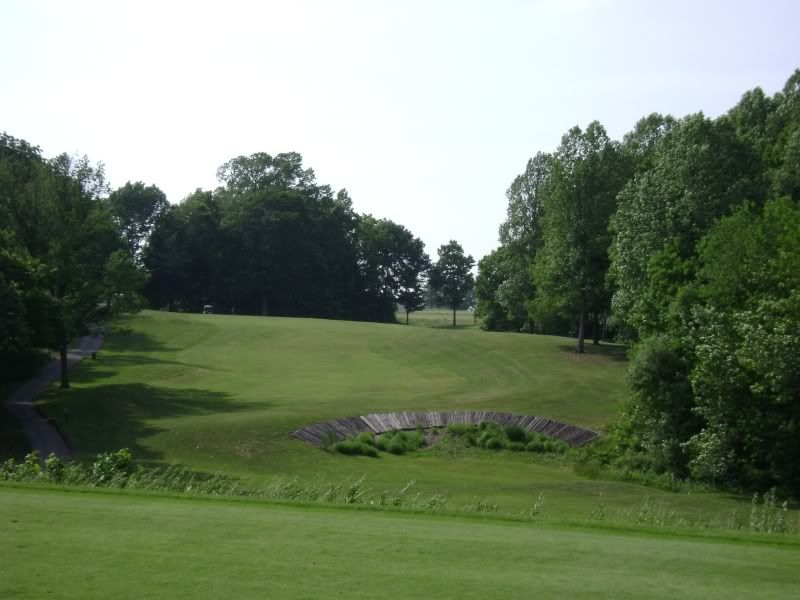
Pines #8 – 187 yards – The best par three in the entire complex. It features a skyline green that provides the illusion that nothing exists beyond. It is a steeply sloping green surface and perhaps the toughest on the front nine.
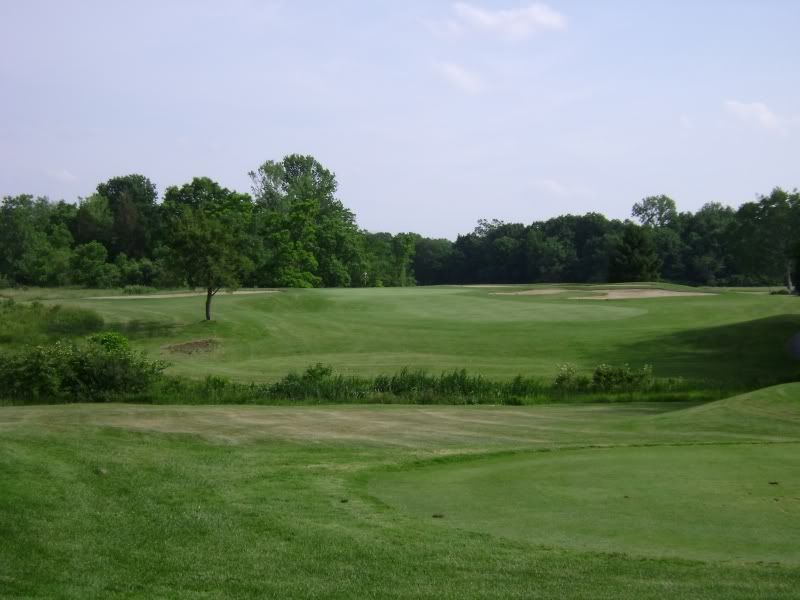
Pines #9 – 549 yards - A deep valley is between the player and the green. The hole is a par five and requires the player to make a do or die decision on their second. Either the player goes for the green, or lays back with a very short second, or hit to the valley below and hit back up the hill to the green. Anybody that goes right off the tee will have a difficult recovery with trees protecting that side of the hole. Straight ahead is no bargain either as the green is the narrowest on the course, only fifteen paces from front to back and a deep yawning bunker short of the putting surface. But the bunker may be the saving grace for the player as it will provide a level lie and the ball will not be covered in the thick rough on the hillside.
The view from the end of the fairway

If one ends up in the bunker they have this shot left
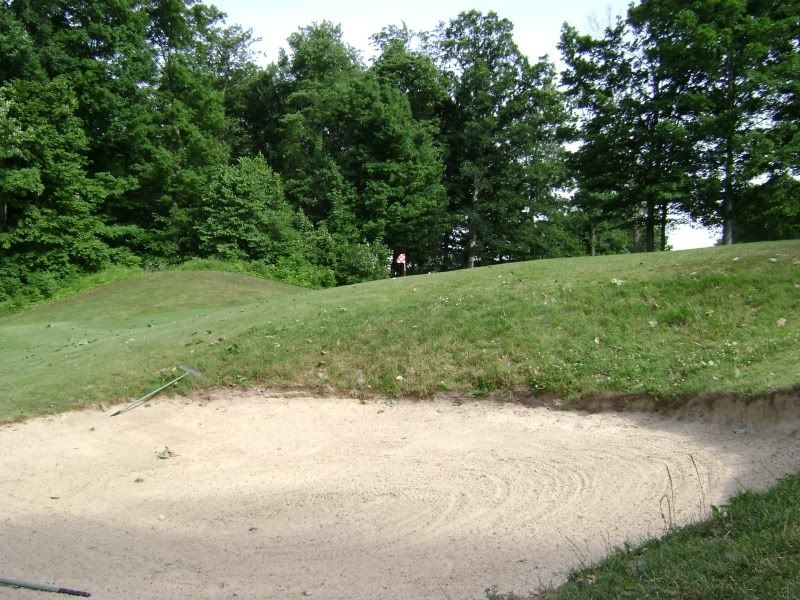
Sycamore #1 – 378 yards - The second nine of the big course begins with a short par four that runs down from an elevated tee and then back up to the plateau green.
A little fuzzy but it shows the down and back up feel of the hole
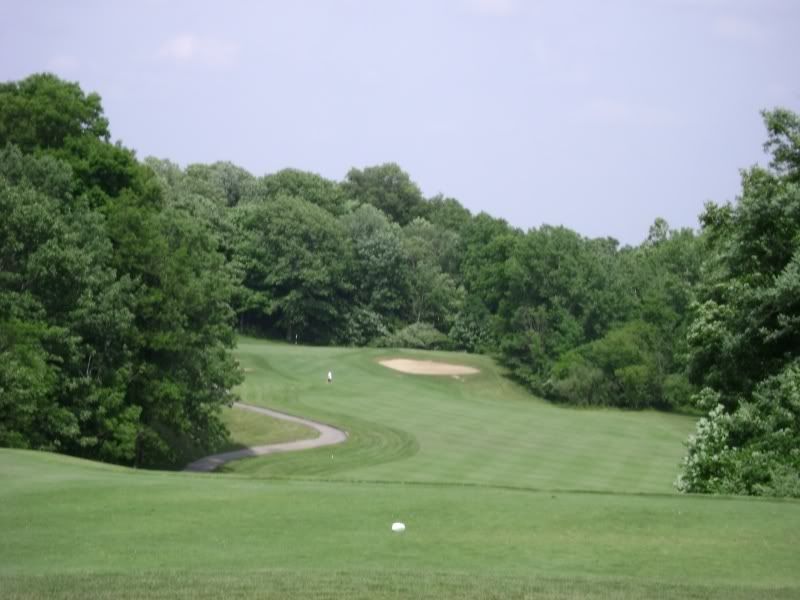
Sycamore #2 – 567 yards - The eleventh is a downhill three-shotter that can be reached in two. The green is angled and has water extending across its front from a pond to the right. The contours of the land will allow a faded approach to run in from the left side of the putting surface. This continues a theme that Dye used throughout the round, leave a wide-open field of play off of the tee, but provide interest and challenge on the second shot.
The run of the fairway into the green and around the pond is evident from this view
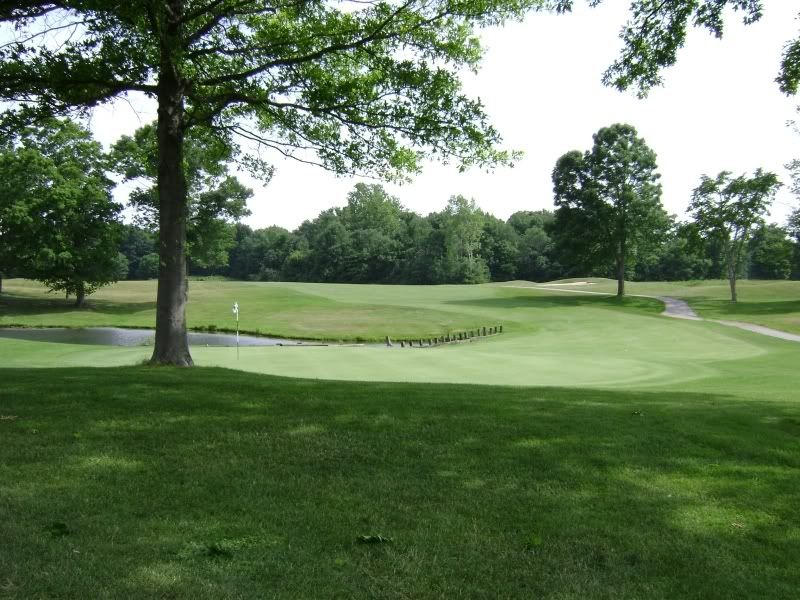
Sycamore #4 – 391 yards - The fourth hole on the Sycamore is a short par four that features a semi-blind drive to a rolling fairway. The second is the beauty shot though as it runs over water to a green sandwiched between two large bunkers. The one short is deep with a grass face. The one behind is what most people will recognize as the bunker has a wooden face composed of railroad ties.
One of the more notable holes on the course

Sycamore #5 – 519 yards - The best hole on the course is now the fifth on the Sycamore. Dye was fairly lenient on his testing of the tee shots around the course, but on this hole he provided a little bit more challenge. A deep bunker on the right is the ideal target line as a ball that draws off of this will leave the player with the perfect shot into the green. Bunkers on the left and rough on the right will kill any hopes of reaching home on the next strike. The green is situated across another valley with three hazards, bunkers short and long and a lone tree to the right. If not in the ideal spot, playing to the low area below is the best play on this par five. The green is slick with a steep slope from back to front. With the demands off the tee, this really separates this hole from its sister at nine and the other holes on the course.
My favorite hole on the course from tee to green

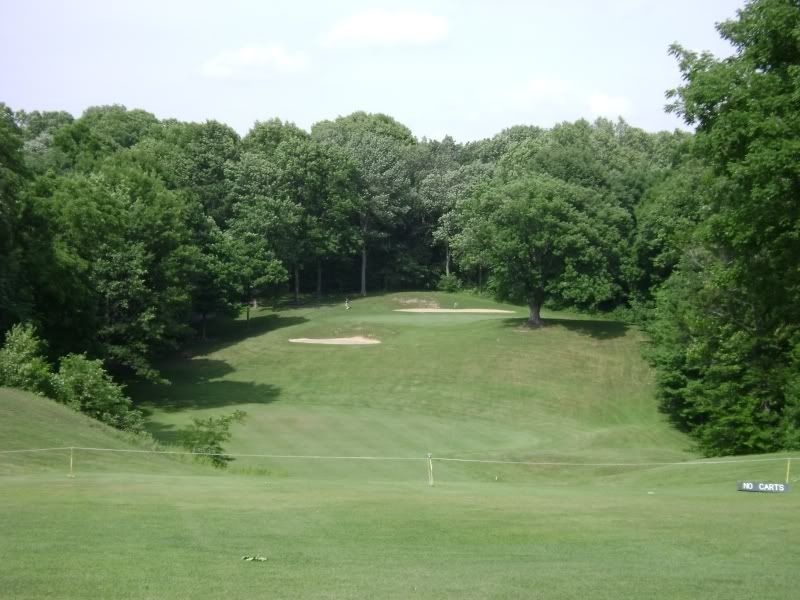

Sycamore #15 – 438 yards - The fifteenth features a blind tee shot that must miss to the right if it is not well struck. The left tumbles down into a miniature forest with a steep slope. The second must run over a deep valley to the most severe green on the course.
The elevation changes are evident from behind the green

Sycamore #18 – 430 yards - The eighteenth looks mild in comparison but ends up getting its fare share of awful shots. The most acclaimed hole on the course is a gorgeous example of how to lay out a hole with rough playing a factor in the design. Dye created a nearly fifty-yard wide fairway with trees on the outside and no real rough. To add interest he split the fairway with a large hump that acts like a centerline hazard. From its widest point the hole narrows until the green is surrounded in a sylvan amphitheatre. A narrow stream runs diagonally through the hole at the green end to provide additional interest and concern for the second shot.
A hole that most people think is the best on the course.
